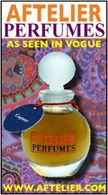There were three things that a newly signed Hollywood starlet could count on: diction lessons, indecent propositions, and being photographed in swimwear.
The triumvirate of expectations got underway well before the starlet had appeared in her first movie, with the photographs used as a way of introducing the latest cheesec ake to the Hollywood press corps and exciting some early publicity among the movie-going public.
ake to the Hollywood press corps and exciting some early publicity among the movie-going public.
The tradition of "leg art," as it was known in Hollywood and to advertising illustrators, had an earnest antecedent in the publicity for the Mack Sennett slapstick comedies. Sennett, understanding the fiduciary power of return inherent in the female form, trotted his beauties out to rocky outcroppings on the California coast and posed them in risqué bathing costumes.
Sennett's bathing beauties scandalized prim America. The bathing costu mes of the day were heavy woolen and rubber garments with blouses and bloomers. Sennett put Hollywood on public notice: Legs were the new lingua franca.
mes of the day were heavy woolen and rubber garments with blouses and bloomers. Sennett put Hollywood on public notice: Legs were the new lingua franca.
These photos from 1916 demonstrate to what (short) lengths Sennett went to sell sex from the dream depot. At the time, a bathing costume was knee-length and bulky. The suits from Sennett's seamstresses exposed half a thigh and the full length of an arm. The only lingering reminder of the traditional suit was the stockings, and these would soon go the way of the silent film.
Pacific Knitting Mills (later Catalina) was the first knitwear manufacturer to include swimwear in its line. The suits were uniformly wool, with "modern" synthetics either used in blends or completely on their own by the 1940s.
The invention of Lastex revolutionized the swimwear industry. Lastex, a yarn intended to perform the same function as the later Spandex, was the trade name for an tensile product made with rubber and ammonia (latex). Weaving Lastex into swimsuits allowed for a lightweight, more flexible garment.
The end of the World War One and the sociological swing towards a "fast" youth culture brought about a design shift that paralleled the rise in skirt hems. The new suits exposed more leg and the Lastex yarn allowed for a greater range of movement. The twenties were an era of innovation and of closing the door on remnant Victorian mores. In the years before the Hays Office enforced the moral doggerel of its 1930 Production Code, there was an idea of nipples and the shadow of cleavage; after 1930 nipples and cleavage both disappeared as "undue" or "indecent." In other words, what wasn't indecent was probably unnecessary. There weren't many instances where a plot depended upon décolletage.
Post-Code leg art was devoid of any prurience that might align it too closely with underground pornography or blue movies. A leg would not be confused with a breast or a navel, body parts that raised all manner of recondite and unsettling emotions in the bourgeois of the first three decades of the century. Entrenched in the idea that America needed protection from the deviant, Hollywood was held captive to this moral compass. A leg, while not exactly desexualized, wasn't the stirrer of darker, more treacherous emotions.
of the first three decades of the century. Entrenched in the idea that America needed protection from the deviant, Hollywood was held captive to this moral compass. A leg, while not exactly desexualized, wasn't the stirrer of darker, more treacherous emotions.
Leg art was not strictly confined to the beach. Studios were fond of the seasonal setting high on incompability: a satin Lastex swimsuit paired with Halloween pumpkins, Christmas, valentines, and shamrocks. These unrealistic and wholesome tableaux served in and of themselves to remove any textbook sexuality from the photographs. America served up its holidays as innocently as milk, thereby reinforcing the idea that any sexual stimulus caused by the holiday leg art was deviant and antithetical to the American Way. One could not pursue the whitewashed American ideal of happiness while masturbating in a corn crib.
Leg art reached its ap ogee in the early 1940s, with the corn-fed Betty Grable photograph. Grable, whose creamy complexion and blonde curls evoked a ripe Iowa farmgirl, posed in the archetypal 1940s swimsuit, one that strongly resembled a foundation garment. This style of suit was a reminder that many swimsuit designers had started out as manufacturers of undergarments. Nowhere was this truer than with Mabs of Hollywood, a swimwear company run by ex-chorine Mabs Barnes. Barnes got her start by making girdles for dancers. In the cups of the foundation-type swimsuits one can see the genesis of the 1950s bullet bra.
ogee in the early 1940s, with the corn-fed Betty Grable photograph. Grable, whose creamy complexion and blonde curls evoked a ripe Iowa farmgirl, posed in the archetypal 1940s swimsuit, one that strongly resembled a foundation garment. This style of suit was a reminder that many swimsuit designers had started out as manufacturers of undergarments. Nowhere was this truer than with Mabs of Hollywood, a swimwear company run by ex-chorine Mabs Barnes. Barnes got her start by making girdles for dancers. In the cups of the foundation-type swimsuits one can see the genesis of the 1950s bullet bra.
The emergence of the bikini in the late 1940s put Hollywood pin-up art into a new erotic category. The older cheesecake became bland and lacked the sensual immediacy engendered by a voluptuous mammary couplet and that strangely exciting pudendal stand-in, the belly button.
Monday, January 14, 2008
The Artful Leg
Labels:
Hollywood history,
Leg Art,
pinups
Subscribe to:
Post Comments (Atom)









12 comments:
Sometimes it baffles me why swimwear has to be pushed to the limits of complete nudity.... I'm yearning for more modesty, and something that is 'suggestive' as opposed to 'all out'.
Those 1916 photographs are far more attractive to me...
Always loved that photo of Betty,but it's true...it looks like a big pair of Spanx!
SB, isn't the first 1916 photo darling?
WB, the way that suit rides her rump has always bothered me. You've nailed it!
I'm trying to imagine swimming in a suit made of wool. I feel...uncomfortable.
Thomas, I have never been able to wear wool next to my skin. Others can do it easily, but it makes my own skin feel crabby and uncomfortable.
Thank goodness for the modern one piece and the bikini - it must have been awful to wear such bulky dressy swim costumes! I love the photo's:)
These pictures are completely fantastic.
Such a cool and informative post. I'm with susie b. I'm digging more fabric rather than more skin. In fact, I think Serena V. sported a non-high-cut onepiece on Gossip Girl recently, and I swooned.
p.s. Your profile description is one of the best I have ever come across. :)
Ali, what a nice compliment. Thank you!
I love the look of retro swimsuits...I'd vote for one-pieces (proper one-pieces, not cutaway wannabe bikinis) over two-pieces any day.
I agree with Susie B, but as for your post, when you wrote: "America served up its holidays as innocently as milk, thereby reinforcing the idea that any sexual stimulus caused by the holiday leg art was deviant and antithetical to the American Way. One could not pursue the whitewashed American ideal of happiness while masturbating in a corn crib..."
I couldn't help but think of course of that this was a wonderful critical addendum to that scene in a Christmas Carol, when the father unveils the leg lampshade!
Riz, ROTF!
Post a Comment